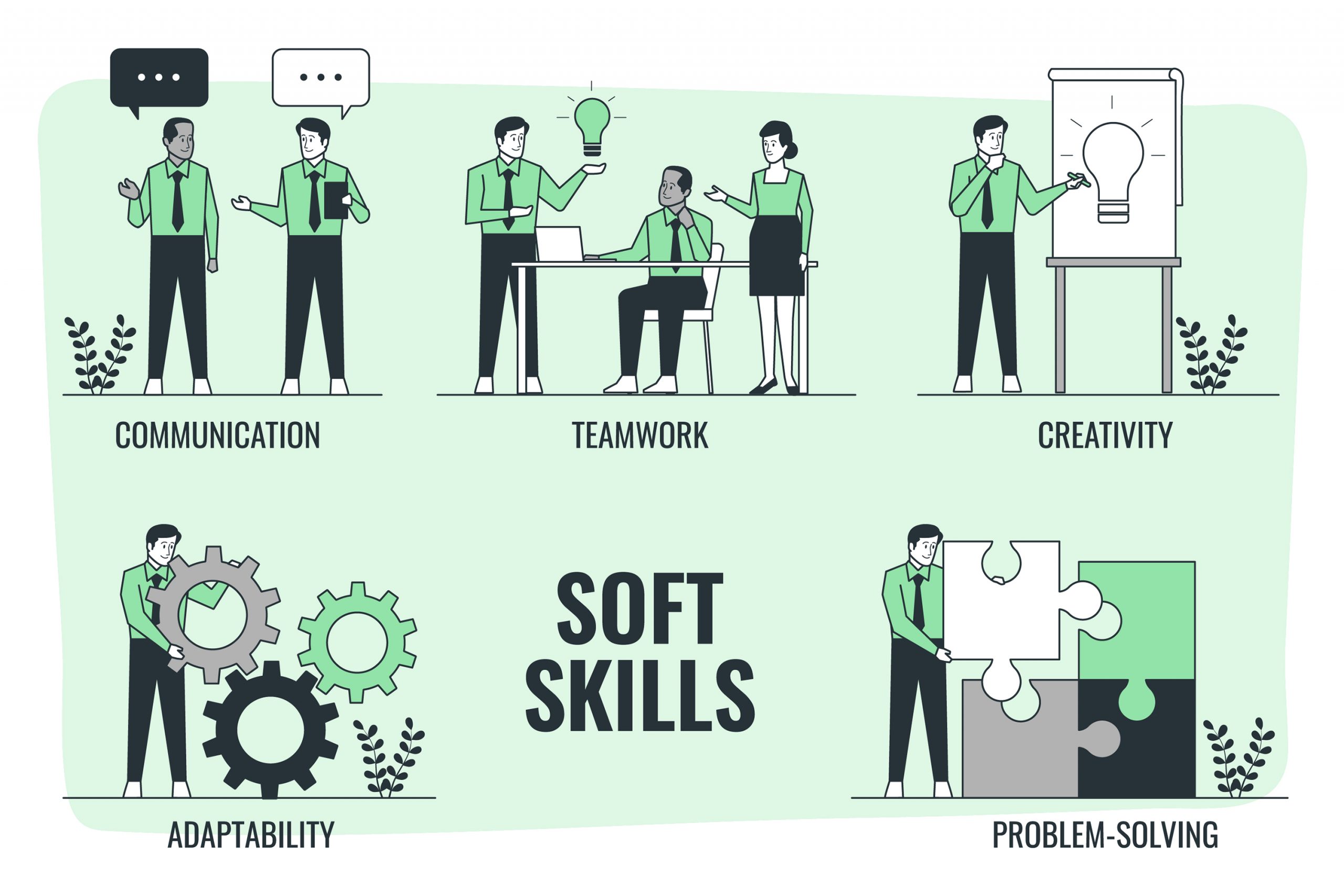In 2024, the job market continues to value soft skills as essential components of a well-rounded employee. Employers are looking for candidates who bring more than just technical expertise—they want people who can communicate, collaborate, adapt, and solve problems effectively. Highlighting these skills on your resume is crucial for standing out, but showcasing them effectively requires a thoughtful approach.
This guide will walk you through how to display your soft skills on your resume in a way that resonates with hiring managers and sets you apart in the competitive job market.
1. Identify the Soft Skills Relevant to the Job
Not all soft skills carry the same weight in every role. The key is to identify which skills are most valued in your target job. Start by carefully reading the job description and noting any mentioned skills or qualifications related to teamwork, problem-solving, communication, adaptability, or leadership.
Examples of Key Soft Skills in 2024:
- Communication: Essential for roles that involve teamwork, client interaction, or management.
- Adaptability: Highly valued in fast-paced or rapidly changing environments, such as tech or healthcare.
- Problem-Solving: Useful for jobs in engineering, IT, or finance, where troubleshooting and critical thinking are required.
- Emotional Intelligence (EQ): Increasingly important in leadership roles and fields requiring high levels of empathy, like customer service or healthcare.
- Collaboration: Necessary for remote roles or positions in team-driven industries like marketing, project management, and education.
2. Use Action Verbs to Emphasize Soft Skills in Your Work Experience
To demonstrate your soft skills, incorporate action verbs into your work experience section that highlight how you’ve applied these skills. Instead of simply stating “strong communication skills,” describe specific situations where you successfully communicated to solve a problem, lead a project, or build a relationship.
Examples of Action Verbs for Soft Skills:
- Communication: “negotiated,” “mediated,” “presented,” “facilitated”
- Adaptability: “adjusted,” “adapted,” “shifted focus,” “pivoted”
- Problem-Solving: “resolved,” “improvised,” “analyzed,” “implemented”
- Collaboration: “partnered,” “coordinated,” “liaised,” “engaged”
Example:
“Facilitated weekly cross-departmental meetings to align project goals, improving team collaboration and reducing project completion time by 15%.”
3. Provide Measurable Achievements That Reflect Soft Skills
Quantifying the impact of your soft skills can make your resume stand out. When possible, include numbers, percentages, or tangible outcomes that illustrate how your skills contributed to the company’s success.
Examples of Quantifying Soft Skills:
- Communication: “Presented monthly reports to senior management, leading to a 10% improvement in quarterly performance.”
- Problem-Solving: “Implemented a new workflow that decreased troubleshooting time by 30%.”
- Collaboration: “Coordinated with a team of 5 to deliver a project 20% ahead of schedule.”
Using measurable achievements reinforces your ability to apply soft skills effectively and achieve results, which gives hiring managers concrete evidence of your value.
4. Incorporate Soft Skills into Your Professional Summary
Your professional summary at the top of your resume is a prime spot to highlight your strongest soft skills and set the tone for the rest of the document. This section should give hiring managers a snapshot of your personality and strengths, especially those that align with the company culture and job requirements.
Example of a Strong Professional Summary:
“Results-driven project manager with over 6 years of experience leading cross-functional teams. Known for strong communication and problem-solving skills, with a track record of delivering projects 20% ahead of deadlines. Highly adaptable and skilled at implementing efficient workflows in dynamic environments.”
This summary not only shows the candidate’s experience but also emphasizes their ability to communicate, solve problems, and adapt to challenges.
5. Add a Dedicated Soft Skills Section (Optional)
If the role places a high value on soft skills, consider adding a dedicated Soft Skills section to your resume. This section can highlight 3–5 core skills relevant to the job. List each skill with a short descriptor that shows how it benefits your work style.
Example: Soft Skills
- Effective Communication: Experienced in delivering presentations to diverse audiences, simplifying complex information, and fostering open team communication.
- Problem-Solving: Known for developing creative solutions under tight deadlines, with a focus on resource optimization.
- Adaptability: Proven ability to quickly adjust to new priorities and take on evolving responsibilities in fast-paced environments.
A dedicated section can be particularly helpful for recent graduates or career changers who want to emphasize their transferable skills.
6. Use Keywords from the Job Description
Soft skills are often included as keywords in job descriptions. Including these keywords in your resume is important, especially for roles where the employer uses an Applicant Tracking System (ATS) to screen applications. Carefully review the job description and incorporate relevant keywords naturally into your resume.
For example, if a job description mentions the need for “effective communication,” make sure to use this exact phrase somewhere on your resume.
Example:
“Recognized for effective communication skills, facilitating productive discussions across departments and ensuring project clarity.”
Using these exact terms can increase your resume’s ATS ranking and improve your chances of getting noticed by hiring managers.
7. Tell a Story with Your Work Experience
Recruiters are looking for resumes that tell a story, and incorporating soft skills effectively can help shape your career narrative. Instead of listing tasks, provide context around your roles, emphasizing how your soft skills enabled you to navigate challenges or excel in your responsibilities.
Example:
“As a team leader, I prioritized open communication and collaboration. By fostering a supportive environment, I helped my team exceed sales goals by 25% over the last year.”
This approach gives recruiters insight into how you used your soft skills to achieve success and showcases your potential to do the same for their organization.
8. Showcase Soft Skills Through Endorsements and Recommendations (for LinkedIn)
LinkedIn is an excellent platform for demonstrating your soft skills through endorsements and recommendations. Ask former colleagues, managers, or clients to endorse skills like “team collaboration,” “communication,” or “leadership.” Recommendations that highlight your interpersonal strengths can add credibility and support the soft skills you’ve listed on your resume.
Example:
“Sarah’s adaptability and ability to communicate clearly with clients made her an invaluable asset to our team. She consistently found solutions to challenges and made everyone feel heard.”
After updating your LinkedIn profile, link it on your resume to provide employers with additional context and reinforce your skillset.
Using VioResume to Showcase Your Soft Skills
Creating a resume that effectively highlights your soft skills can be challenging. VioResume offers ATS-optimized templates and professional guidance to help you craft a resume that makes your soft skills shine. With VioResume, you can ensure your resume aligns with the latest industry standards while showcasing your unique strengths.
VioResume Features:
- Keyword Optimization: VioResume’s templates help you integrate the right keywords to ensure your resume gets through ATS screenings.
- Soft Skills Templates: Use templates designed to emphasize both technical and soft skills, giving you a balanced resume that appeals to recruiters.
- Real-Time Feedback: VioResume provides feedback on phrasing and layout, so your resume remains polished and professional.
Explore VioResume’s resume templates optimized for soft skills here to give your resume a professional edge in 2024.
Final Thoughts
Showcasing your soft skills on your resume is essential for standing out in today’s job market. From adaptability to collaboration, these skills demonstrate how you approach work, interact with colleagues, and contribute to an organization’s success. By following these tips, you can create a resume that not only highlights your technical expertise but also shows hiring managers the personal qualities that make you a valuable addition to their team.
Using VioResume can make this process easier by providing structured templates and expert feedback. With the right approach, you can ensure that your resume reflects both your technical and soft skills, positioning you as a well-rounded candidate for any role in 2024.











